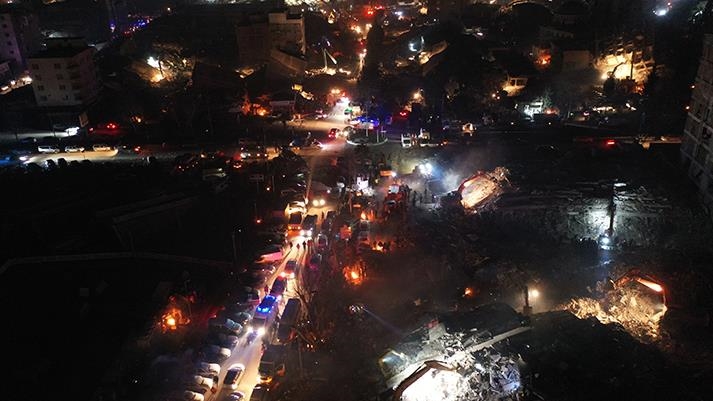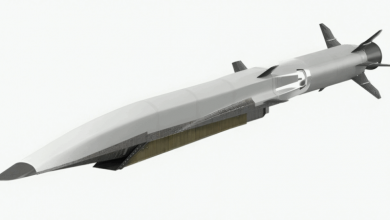Analysis: Why the earthquakes in Türkiye were so deadly and devastating?

Both of these earthquakes were larger than any previously recorded for the East Anatolian Fault, even with historical records going back one thousand years
Monday’s magnitude 7.7 and 7.6 earthquakes in southern Türkiye struck seemingly without warning – and yet geologists have known for years about the potential for a deadly tremor in this region. How can this be true?
Earthquakes on active faults are inevitable but irregular. The East Anatolian Fault, which slipped on Monday, is located between two tectonic blocks that move about 10 millimeters past each other every year, and have for millions of years. This inexorable process, driven by plate tectonics, stretches the crust around each locked fault a tiny bit each year. Eventually, the stress on the fault becomes too great to resist, and it breaks. At 4:17 AM on Monday morning, a fracture began about 30 km northwest of the city of Gaziantep. This fracture started a chain reaction that ripped through more than 200 km of the fault line, ultimately producing a magnitude 7.7 earthquake.
Immediately, other faults in the area began to adjust to this deformation, producing their own earthquakes: aftershocks. These aftershocks generally remained moderate in magnitude – until, about nine hours after the first earthquake, a new earthquake was triggered, about 100 kilometers north of the first epicenter. This event started a new chain reaction along the Sürgü fault, which grew into a magnitude 7.6 earthquake.
Conditions that aggravate the effects of the disaster
Both of these earthquakes were larger than any previously recorded for the East Anatolian Fault, even with historical records going back one thousand years. This is not an unusual situation: Faults are unpredictable and slow. It is not uncommon for there to be gaps of hundreds or even thousands of years between the largest magnitude earthquakes on faults everywhere in the world. The previously known earthquakes in this region have reached estimated magnitudes of 7.0-7.4, for instance in 1893, 1872, 1822, and 1626. Because the earthquake ruptures were all quite shallow, ground shaking was very intense in the surrounding areas.
The devastation is shocking. These earthquakes occurred during the coldest part of the year, in the early morning hours. Millions of people were asleep, dressed for the comfort of their beds. When the shaking hit, those who were able to flee their homes found themselves unprepared for the biting cold and snow. Others, trapped in collapsed buildings, were similarly exposed to the elements, with an even shorter window for survival than normal. Snow and freezing conditions have hampered rescue efforts. People have been driven back into damaged buildings by the cold, increasing the hazard posed by aftershocks.
The area impacted by one large earthquake is huge; two earthquakes double the problem. The combination of a large damage zone with widespread disruption of roads by faulting and landslides makes it very hard to bring in aid. Experience shows that many areas may not receive outside aid for some time. Again, the bad weather compounds this problem.
It is important to note that although the earthquakes themselves were natural, the devastation is in part man-made. Horrific footage of collapsing buildings illustrates the risk of inadequate construction in an earthquake-prone region. Globally, multi-story concrete slab buildings with incorrect concrete or insufficient reinforcement have proved to be extremely dangerous. Although modern building codes do exist in Türkiye, many of the structures predate their existence. Retrofitting existing buildings is expensive and difficult, but without such work, many millions of people will remain at risk. Further, there is evidence that many newer buildings did not conform to the code; some of these buildings collapsed on Monday. Enforcing existing seismic building codes and addressing the hazard posed by older buildings will be critical going forward. These earthquakes show how construction amnesties may seem practical in the short term but are dangerous in that they delay the only real solution to earthquake hazards.
What lessons can we draw from Monday’s earthquakes?
This unfolding tragedy is a stark reminder of the seismic hazard that exists in many parts of Türkiye and the surrounding regions. It is easy to forget, during the long, quiet periods between shaking, that the Earth could move at any time. Even now, southern Türkiye continues to experience sporadic aftershocks. There is a hazard of further earthquakes both in the impacted region and on the faults bordering it, many of which have been stressed by these crustal shifts. Earthquake triggering has already been seen in this event, but can potentially occur over a much longer time interval. Such a series of events was observed in northern Türkiye on the North Anatolian Fault. Starting in 1939, stress triggering led to a series of ten additional major earthquakes, culminating in the magnitude 7.6 Izmit earthquake in 1999.
Further, the building collapses that we have seen in Monday’s earthquakes highlight that common advice for earthquakes, which assumes that buildings will not collapse, may not be appropriate for areas where they do. Detailed investigations of collapses in recent events should be used to develop straightforward response plans. Such plans should then be widely dispersed and practiced across all levels of government and the public so that everyone has a clear idea of what they should do when they feel shaking. Earthquake Early Warning systems (EEW) might be able to alert people farther from the seismic source, but still within the zone of vulnerability, quickly enough for them to take action.
Earthquakes are inevitable, but the damage and deaths they produce can be minimized. The first priority right now must be to provide aid to those impacted by Monday’s deadly events. However, the second must be to look beyond, what can be done before the next tremor – which could hit in a hundred years, or tomorrow.
Source: AA





